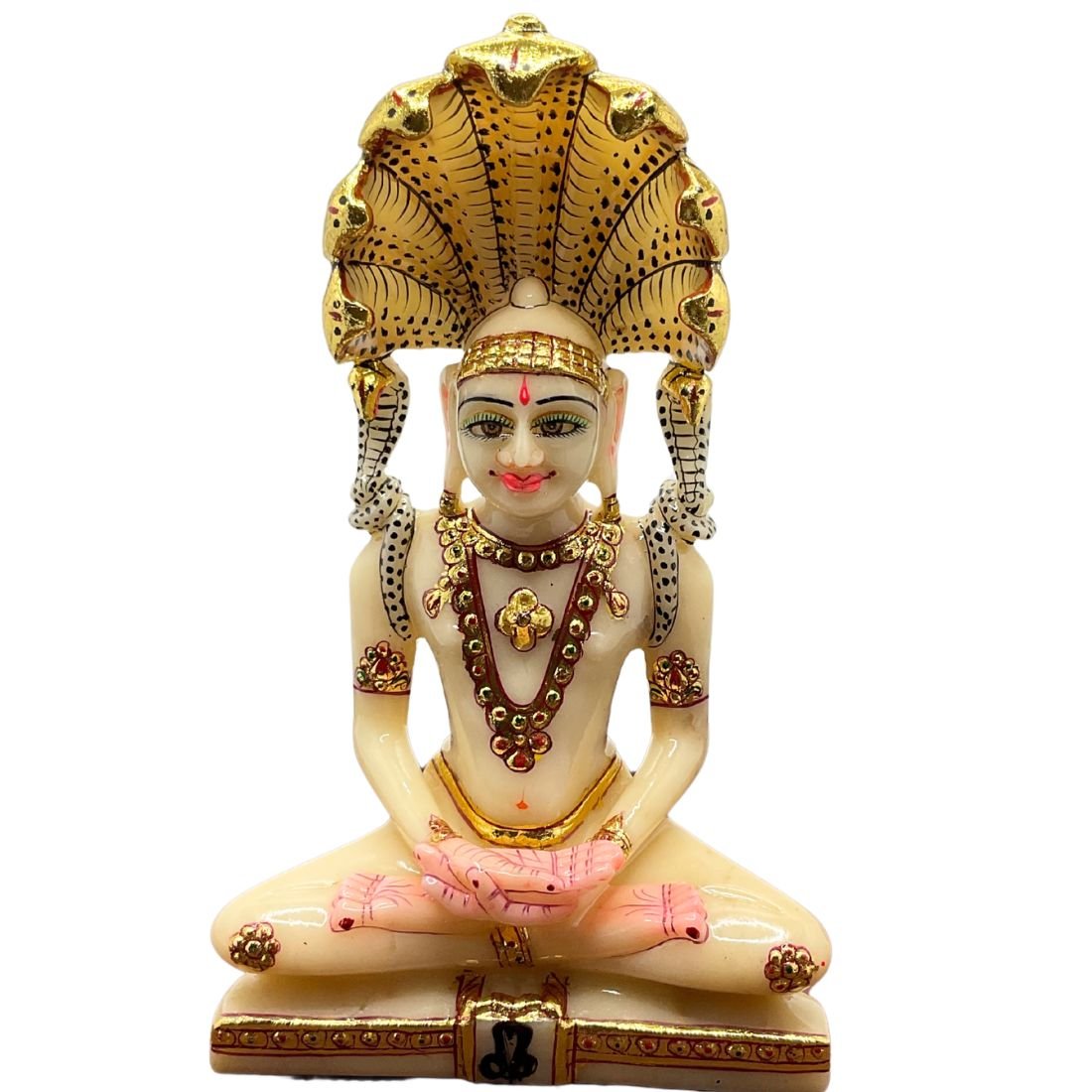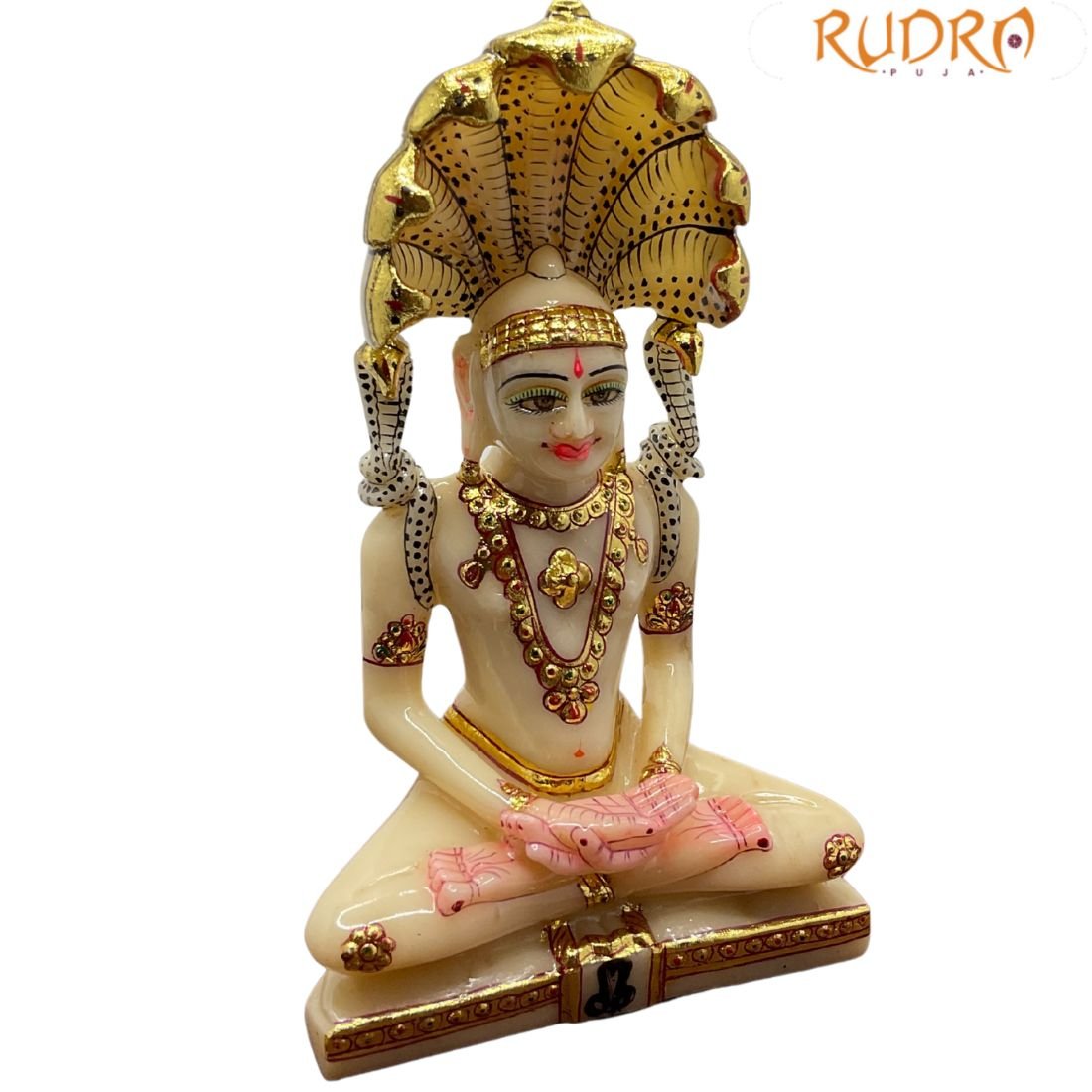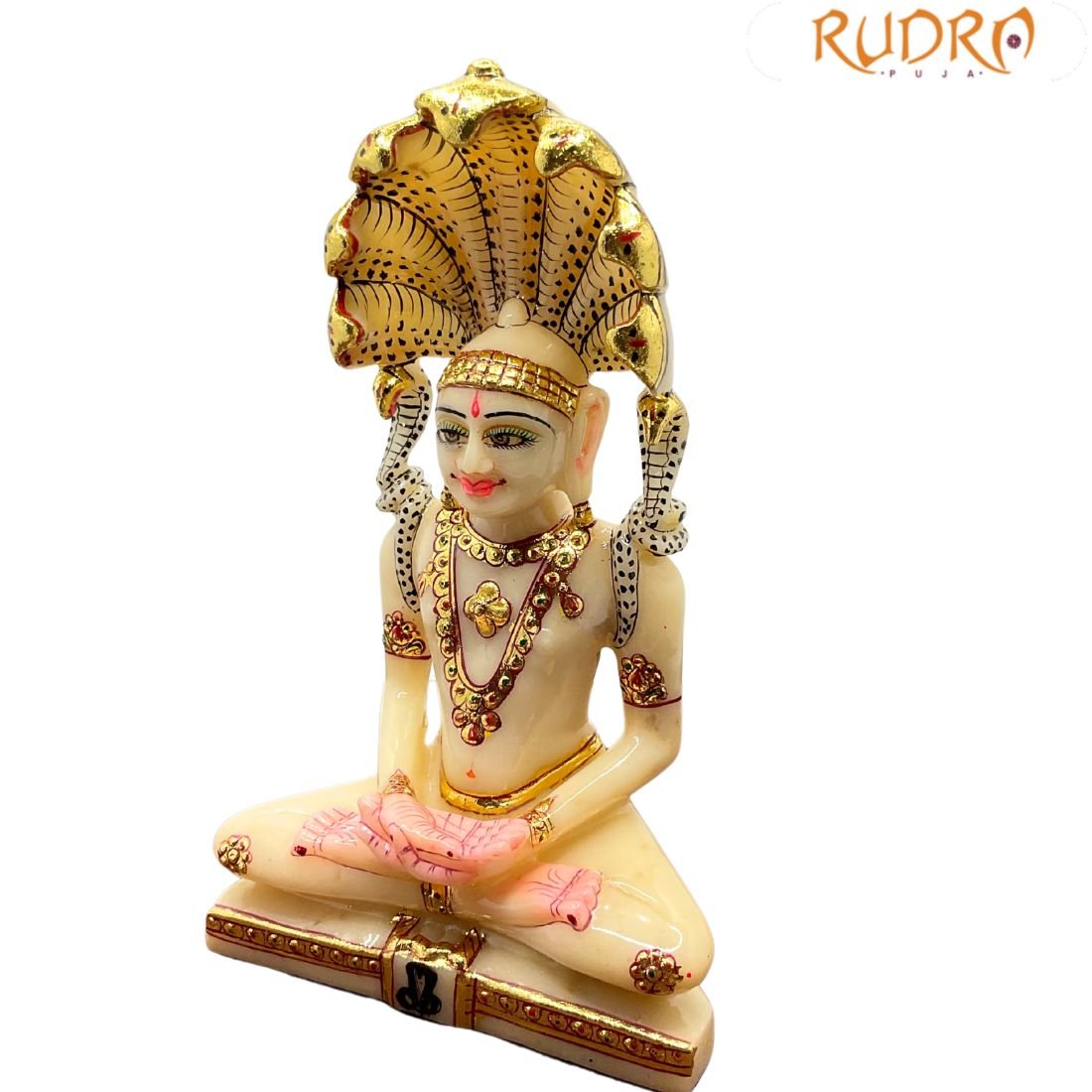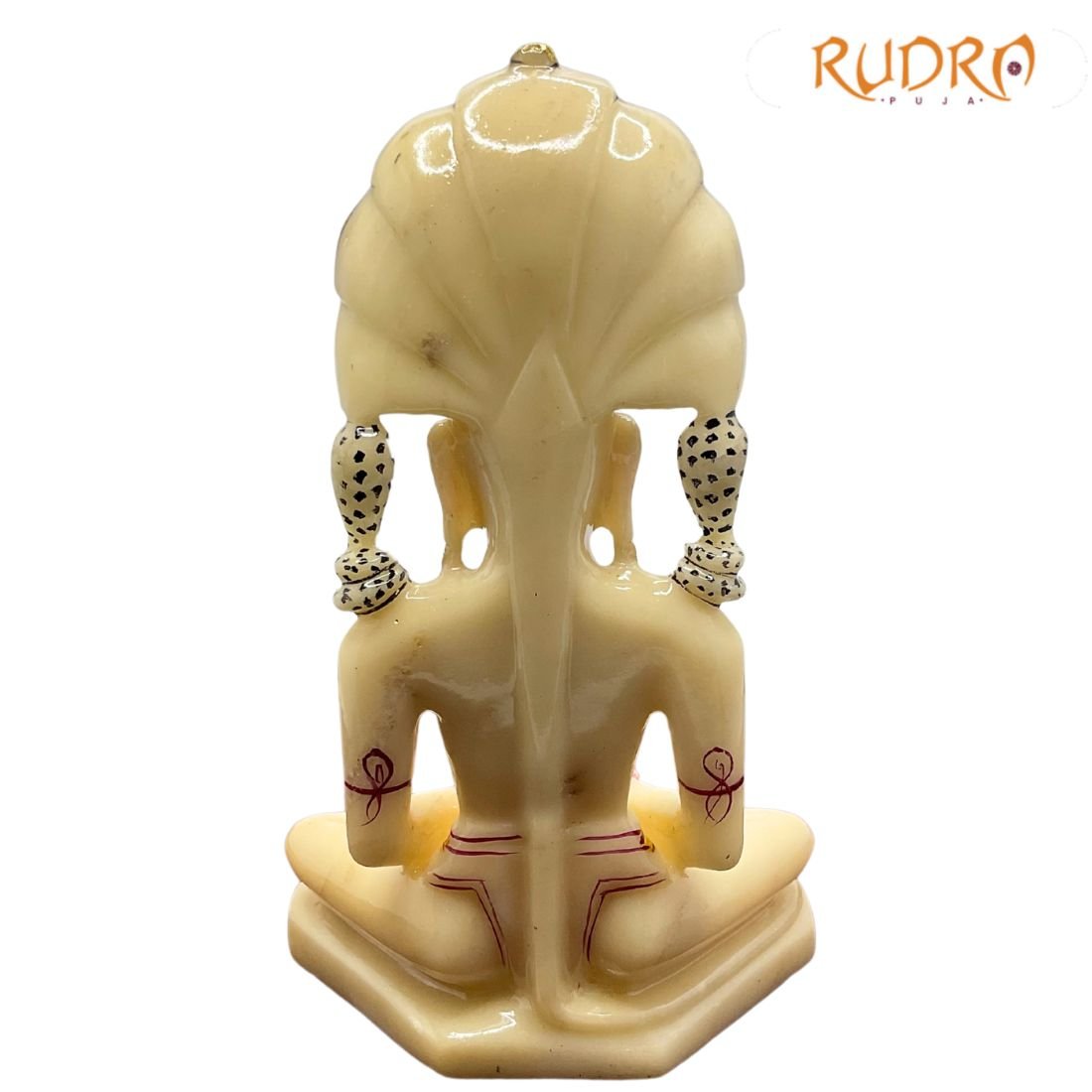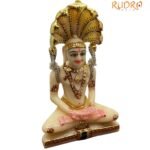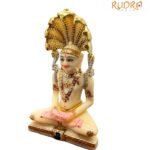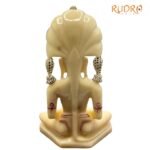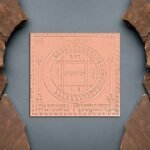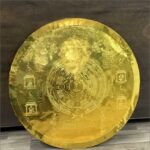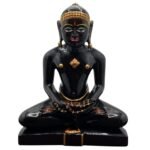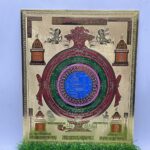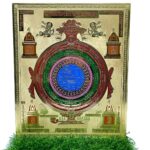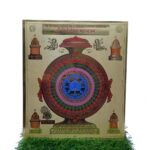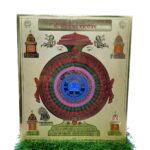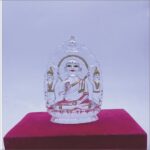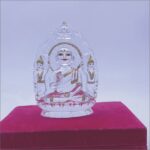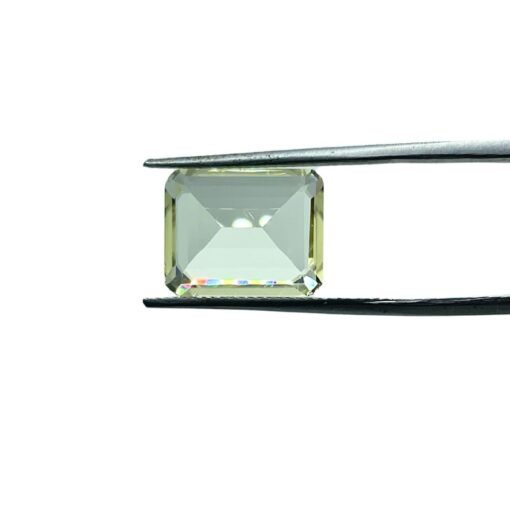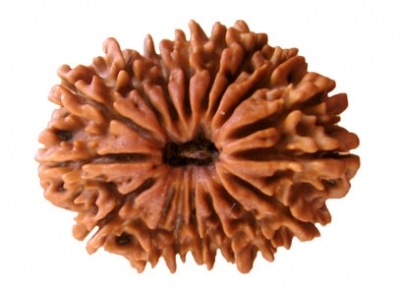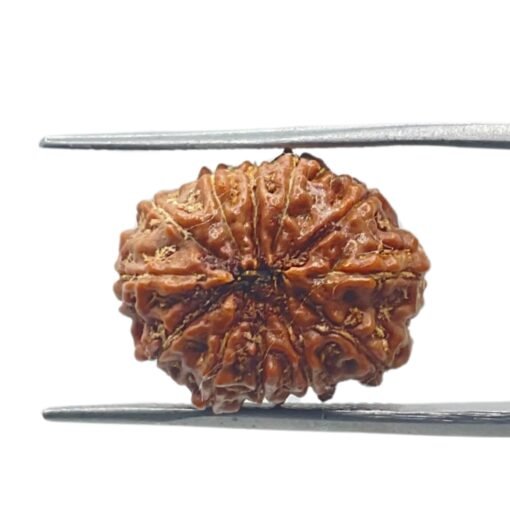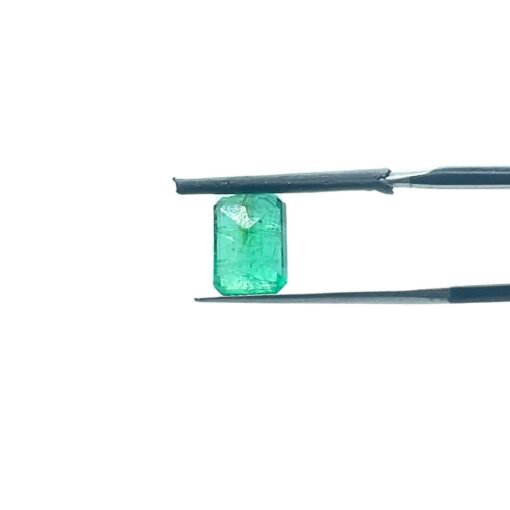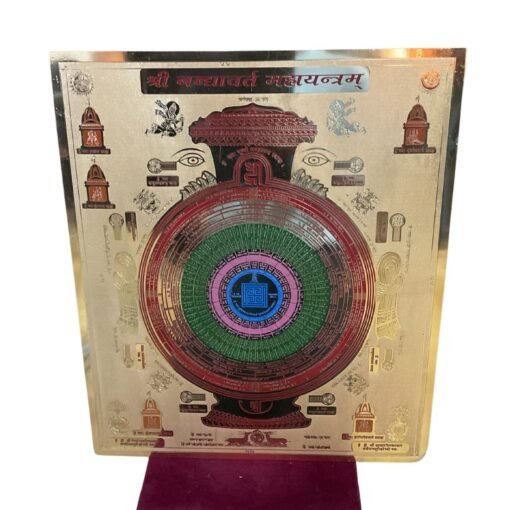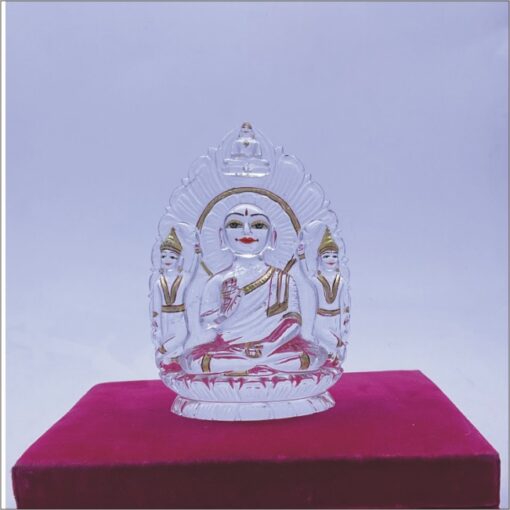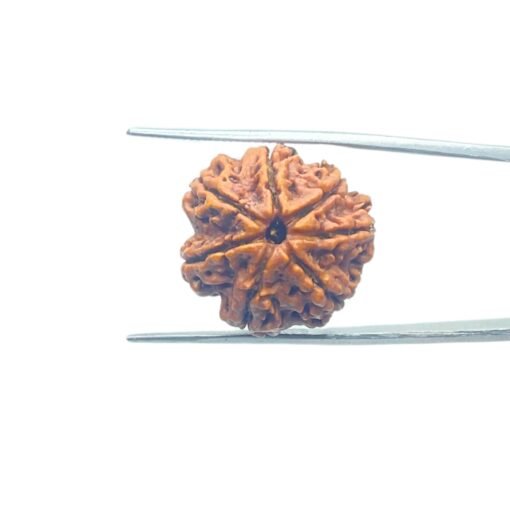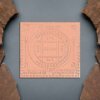Currency
Parshwanath Bhagwan Jain Statue In Ivory Yellow Stone
Height : 7 Inches
Width : 4.25 Inches
Weight : 708 Gram
Original price was: ₹15,000.₹11,000Current price is: ₹11,000.

Get 3% Discount on Prepaid Orders
1 in stock
What Our Customers Are Saying
Parshwanath Bhagwan Jain Statue In Ivory Yellow Stone
The Parshwanath Bhagwan Jain Statue, intricately carved in ivory yellow stone, is a remarkable piece of spiritual and artistic significance. Lord Parshwanath, the 23rd Tirthankara in Jainism, is widely revered for his teachings on non-violence, truth, and detachment from materialistic desires. This statue, often found in temples and private collections, exudes a sense of divine serenity and profound devotion. The soft ivory yellow hue of the stone enhances the sculpture’s delicate features, giving it a radiant and tranquil appearance.
Craftsmen meticulously carve these statues with detailed iconography, showcasing Lord Parshwanath in a meditative posture, seated in Padmasana (lotus position) or standing in Kayotsarga (standing meditation). A distinctive feature of Parshwanath’s depiction is the seven-hooded serpent canopy over his head, symbolizing his spiritual protection and enlightenment. The finely etched facial expressions convey peace, wisdom, and compassion, reflecting the essence of Jain philosophy. The smooth and polished texture of the ivory yellow stone adds to the divine aura, making it a centerpiece of spiritual admiration.
Such statues are not only revered as sacred objects of worship but also valued as artistic masterpieces. The choice of ivory yellow stone is significant, as it represents purity and longevity, ensuring the statue remains an enduring symbol of faith. Whether placed in temples, home shrines, or art collections, the Parshwanath Bhagwan Jain Statue in ivory yellow stone stands as a testament to the rich heritage of Jain art and devotion, inspiring devotees and art enthusiasts alike.
Benefits Of Parshwanath Bhagvan Jain Statue In Ivory Yellow Stone :
A Parshwanath Bhagwan Jain statue made from ivory yellow stone carries both spiritual and aesthetic significance. Here are some key benefits of having such a statue:
- Blessings of Parshwanath Bhagwan – Parshwanath, the 23rd Tirthankara of Jainism, is associated with protection, peace, and wisdom. A statue of him is believed to bring positive energy.
- Enhances Meditation – The presence of a Parshwanath Bhagwan idol in a temple or home creates a serene atmosphere, aiding in meditation and spiritual growth.
- Removes Negativity – According to Jain beliefs, having his idol in the right place can help eliminate negativity and obstacles from life.
- Elegant Appearance – Ivory yellow stone has a smooth texture and warm color, making the statue visually appealing and luxurious.
- Durability – This stone is known for its strength and longevity, ensuring that the statue remains intact and beautiful for generations.
- Intricate Carvings – The material allows artisans to carve detailed designs, enhancing the beauty of the idol.
- Positive Vastu Influence – Jain idols, when placed correctly, can enhance the Vastu of a home or temple, inviting peace and prosperity.
- Cooling Effect – Ivory yellow stone remains cool, making it perfect for temples, where maintaining a serene ambiance is important.
Parshwanath Bhagvan Jain Statue In Ivory Yellow Stone Benefits In Hindi / ( पार्श्वनाथ भगवान जैन प्रतिमा आइवरी पीले पत्थर में लाभ हिंदी में )
पार्श्वनाथ भगवान की मूर्ति जो हाथी दांत पीले पत्थर से बनी होती है, उसमें आध्यात्मिक और सौंदर्यात्मक दोनों प्रकार के गुण होते हैं।
- पार्श्वनाथ भगवान का आशीर्वाद – पार्श्वनाथ भगवान, जो जैन धर्म के 23वें तीर्थंकर हैं, उनकी मूर्ति घर या मंदिर में रखने से सुरक्षा, शांति और ज्ञान की सकारात्मक ऊर्जा प्राप्त होती है।
- ध्यान में सहायक – पार्श्वनाथ भगवान की प्रतिमा एक शांतिपूर्ण वातावरण बनाती है, जिससे ध्यान और आध्यात्मिक प्रगति में मदद मिलती है।
- नकारात्मकता दूर करती है – जैन मान्यताओं के अनुसार, सही स्थान पर पार्श्वनाथ भगवान की मूर्ति रखने से जीवन की नकारात्मक ऊर्जा और बाधाएँ समाप्त होती हैं।
- शानदार स्वरूप – हाथीदांत पीले पत्थर की चिकनी बनावट और गर्माहट भरा रंग इसे बेहद आकर्षक और भव्य बनाते हैं।
- टिकाऊ और मजबूत – यह पत्थर अपनी मजबूती और दीर्घायु के लिए जाना जाता है, जिससे प्रतिमा पीढ़ियों तक सुंदर और सुरक्षित बनी रहती है।
- सूक्ष्म नक्काशी – यह पत्थर कारीगरों को बारीक नक्काशी करने की अनुमति देता है, जिससे प्रतिमा की सुंदरता और अधिक निखर जाती है।
- सकारात्मक वास्तु प्रभाव – सही स्थान पर जैन प्रतिमा रखने से घर या मंदिर में वास्तु संतुलन बना रहता है, जिससे शांति और समृद्धि आती है।
- शीतलता प्रदान करता है – हाथीदांत पीला पत्थर स्वाभाविक रूप से ठंडा रहता है, जो मंदिरों में एक शांत और पवित्र वातावरण बनाए रखने में सहायक होता है।
How To Worship Of Parshwanath Bhagvan Jain Statue In Ivory Yellow Stone / ( हाथी दांत पीले पत्थर में पार्श्वनाथ भगवान जैन प्रतिमा की पूजा कैसे करें )
1. Prepare the Worship Area
-
Clean the space where the idol is placed.
-
Ideally, the idol should be placed on a clean, elevated platform (asana).
-
Ensure the area is quiet, calm, and sacred.
2. Morning Ritual (Snatra Puja or Abhishek)
If you’re following temple-style worship:
Abhishek (Ritual Bathing)
-
Use purified water, milk, sandalwood water, and sometimes coconut water.
-
Pour gently over the idol while chanting the Namokar Mantra or Parshwanath Bhaktamar Stotra.
-
Dry the idol with a clean, soft cloth.
3. Chandan and Pushpa Puja (Sandalwood & Flower Offering)
-
Apply a tilak of Chandan (sandalwood paste) on the forehead of the idol.
-
Offer fresh, fragrant flowers (preferably white or yellow lotus, marigold, or jasmine).
4. Dravya Puja (Traditional Jain Ritual with 8 Offerings)
You may recite:
“Ashta Dravya Samarpayami” (I offer these eight substances).
Here are the 8 traditional offerings:
-
Jal (Water) – for cleanliness.
-
Chandan (Sandalwood) – for fragrance and peace.
-
Pushpa (Flowers) – for devotion.
-
Dhoop (Incense) – for purity.
-
Deepak (Lamp) – symbol of knowledge.
-
Naivedya (Fruits/Dry fruits) – symbolic (Jains do not offer cooked food).
-
Akshat (Rice grains) – for prosperity.
-
Phal (Fruits) – often used symbolically.
5. Mantra Japa / Bhakti
Recite or listen to devotional hymns or mantras:
-
Namokar Mantra
-
Parshwanath Stavan or Stotra
-
Bhaktamar Stotra
-
Kalyanak Bhajans
6. Arti and Mangal Deevo
Wave the arti (lamp) in circular motion in front of the idol while chanting:
“Jai Jai Parshwanath Prabhu, Trilok Na Naath…”
End with:
-
Mangal Path or Shanti Mantra
-
Bow down with folded hands and internal reflection.
| Weight | 1 kg |
|---|
Q & A
FAQS
Yes — Rudrapuja guarantees authenticity and offers XRAY-certified Rudraksha beads, ensuring that each product is genuine and lab-validated.
Absolutely! We provide fast international shipping, with delivery typically within 5–12 business days after dispatch.
Yes — We offer Cash on Delivery across India, along with free shipping options.
You have 10 days from the date of delivery to return an item, provided it’s unused and in its original condition.
We strictly deal only in genuine products, and each Rudraksha is lab-certified to maintain the highest standards.
Visit our dedicated FAQ page for detailed answers on selecting Rudraksha beads, their benefits, meditation usage, and more.
You can reach us via WhatsApp, phone, or email. Details are available on our "Contact Us" page and site header.
At Rudrapuja, we promise 100% genuine products with an authenticity certificate. We source every Rudraksha bead to ensure freshness and purity. Our Vedic Yantras are crafted strictly as per the Puranas. We focus on understanding customer needs, solving their challenges, and offering authentic quality at the best price.

